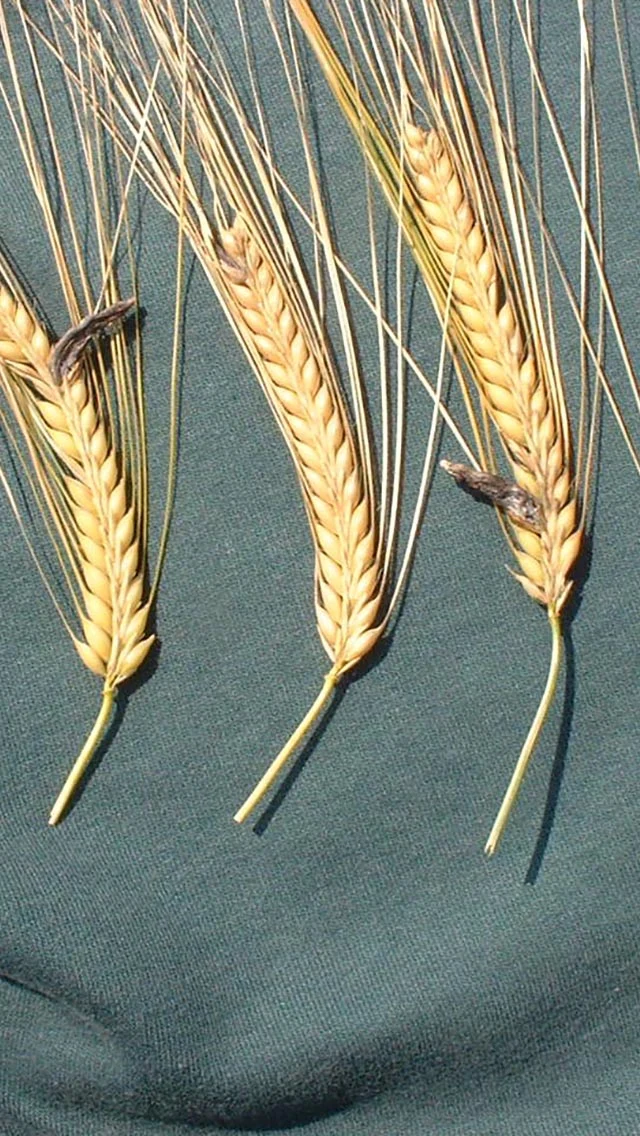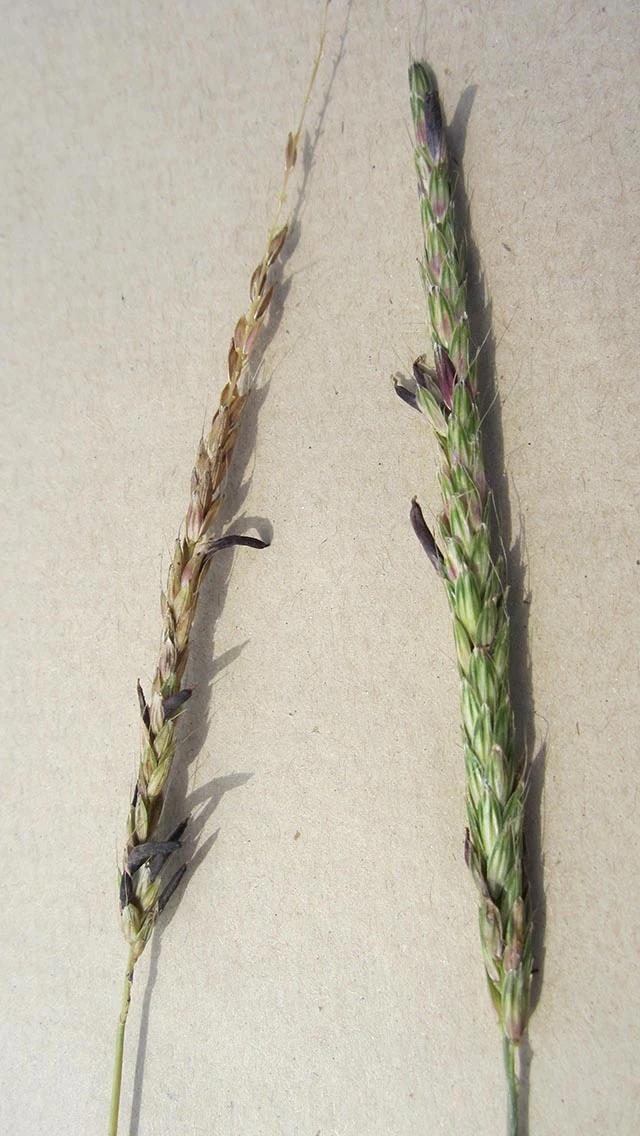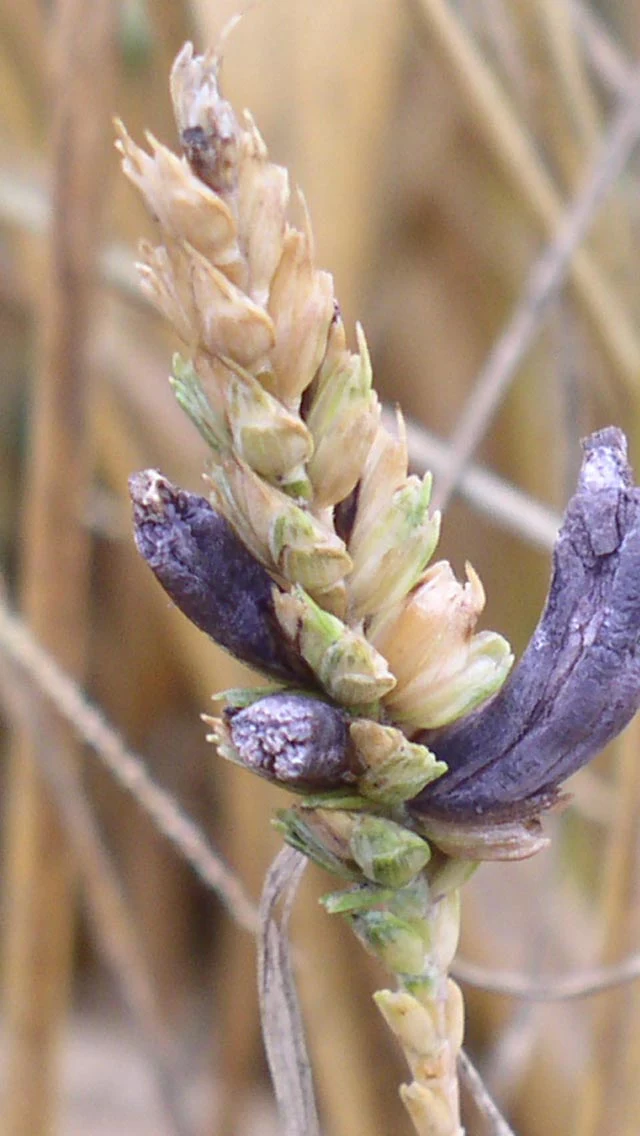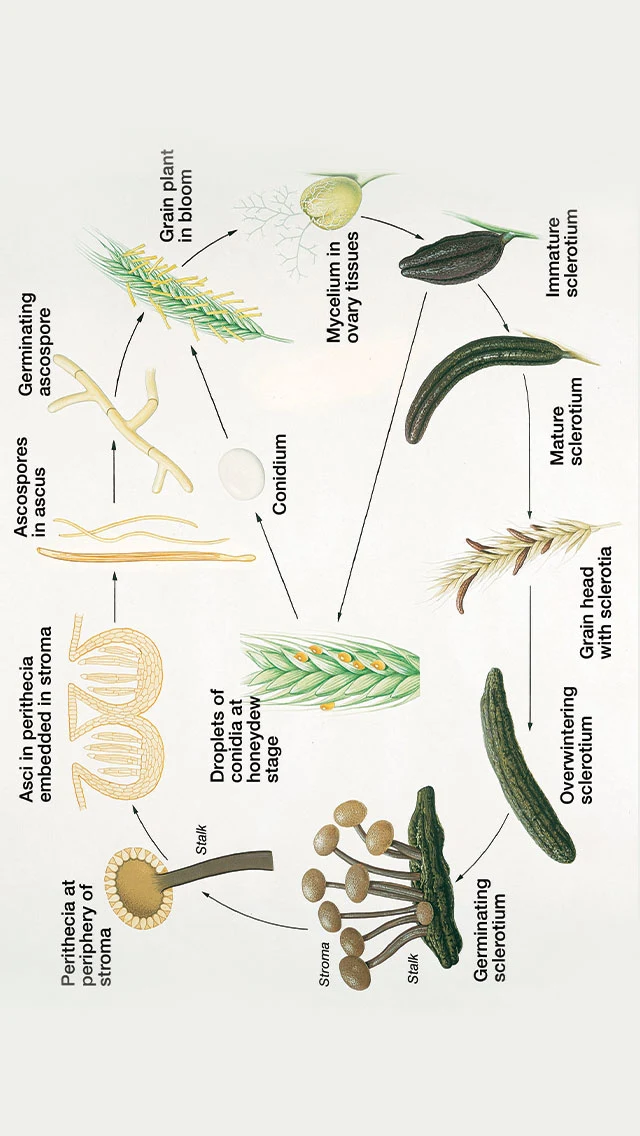
Ergot
Ergot in barley ears (Photo A. Cottey)
Pathogen
Fungus
Hosts
Wheat, barley, triticale, rye, oats, grasses (esp. black-grass).
Symptoms
Infected florets exude a honey dew prior to flowering and this accumulates into a sticky yellow mass. Purple-black horn-like sclerotia (ergots) appear, which replace one or more seeds in the head. They may be up to four times the size of normal seed.
Development
Ergots remain viable in the soil for up to one year, germinating to produce infective ascospores in the summer. These infect flowers leading to the production of more ergots. Infected grains often provide the inoculum to the soil. The disease spreads by wind and rain splash although insect vectors can transfer the disease, floret to floret, at the honey dew stage.
Favourable factors
Wet, cool weather during the flowering period.
Importance
Ergots contain poisonous alkaloids and contaminated grain cannot be used for human or livestock consumption. Little effect on yield.
Control
Sow ergot free seed
Deep cultivation helps as ergots cannot germinate more than 4 cms below the soil surface.
Seed treatments can reduce the germination of ergot particles in contaminated seed stock thus helping to reduce the spread of spores.
Reducing the grass weed population (a common secondary source of inoculum) will also reduce disease risk.

Ergot in black-grass (Photo M. Garnett)

Ergot in wheat (Photo G. Bubb)

Ergot close up

Ergot life cycle

Germinating stroma (Photo N. Adam)


